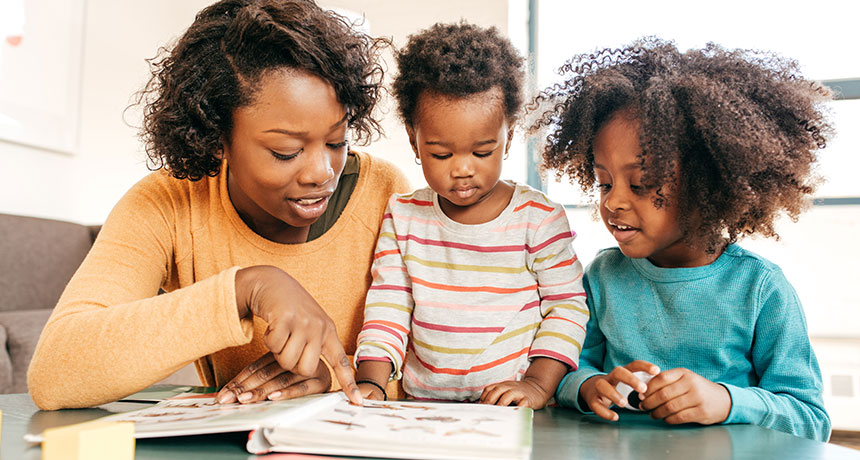Seeing one picture at a time helps kids learn words from books

We’re going through a comic book phase at my house. Since lucking into the comics stash at the library, my 4-year-old refuses any other literary offering. Try as I might to rekindle her love of Rosie Revere, my daughter shuns that scrappy little engineer for Superman every single night.
I know that comic fans abound, but I’ll admit that I get a little lost reading the books. The multi-paneled illustrations, the jumpy story lines and the fact that my daughter skips way ahead make it hard for me to engage. And I imagine that for a preliterate preschooler, that confusion is worse.
There’s evidence to this idea (although it won’t help me force my daughter to choose girl-power science lit over Superman). A recent study found that kids better learn new vocabulary from books when there’s just one picture to see at a time.
Psychologist Jessica Horst and colleague Zoe Flack, both of the University of Sussex in England, read stories to 36 3½-year-olds. These were specially designed storybooks, with pages as big as printer paper. And sprinkled into the text and reflected in the illustrations were a few nonsense words: An inverted, orange and yellow slingshot that mixed things, called a tannin, and a metal wheel used like a rolling pin, called a sprock.
The researchers wanted to know under which reading conditions kids would best pick up the meaning of the nonsense words. In some tests, a researcher read the storybook that showed two distinct pictures at a time. In other tests, only one picture was shown at a time. Later, the kids were asked to point to the “sprock,” which was shown in a separate booklet among other unfamiliar objects.
Kids who saw just one picture at a time were more likely to point to the sprock when they saw it again, the researchers found. The results, published June 30 in Infant and Child Development, show how important pictures can be for preliterate kids, says Horst.
“As parents, it’s easy to forget that children do not look at the written text until they themselves are learning to read,” she says. (This study shows how infrequently preschoolers look at the words.) That means that kids might focus on pictures that aren’t relevant to the words they’re hearing, a mismatch that makes it harder for them to absorb new vocabulary.
Does this mean parents ought to trash all books with multiple pictures on a page? Of course not. Horst and Flack found that for such books, gesturing toward the relevant picture got the word-learning rate back up. That means that parents ought to point at Wonder Woman’s Lasso of Truth or wave at the poor varlet that Shrek steals a lunch from. (Shrek!, the book by William Steig, contains delightful vocabulary lessons for children and adults alike.)
Those simple gestures, Horst says, will help you and your child “literally be on the same page.”